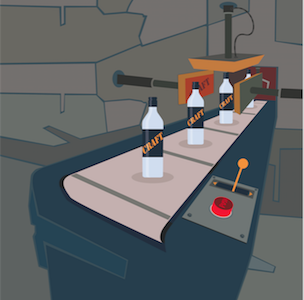Where does this all leave us? The US has firmer guidelines than most of the world as to the marketing of craft products but they are open to interpretation – even the US federal courts find it hard to define and rule on these descriptions. In Europe craft has no legal definition, so let’s talk to some distillers in the UK about what it means to them.
CRAFT OR NOT CRAFT?
Brewdog – which has been vocal on its interpretation of craft beer – is preparing to enter the spirits market under its new distillery, Lone Wolf. So let’s see what distiller Steven Kersley thinks as a starting point. He says to put craft on a label the operation has to be focused on quality, innovation (which is normally limited by corporate ownership), and transparency, which is where he sees an opportunity for abuse.
“A lot of small distillers are not transparent around their raw material,” he says. “We will be truly grain to glass as we’ll make our own vodka which will be then used as the base for each of our gins. Most distillers we identify with being craft procure their vodka from industry suppliers, such as Hayman or Thames distillers. This is understandable as the vodka distillation equipment is a huge investment.
“Some of the distilleries which do buy in spirit are making fantastic gins; but the dubiety for me is, has the liquid been crafted or has it been flavoured? For me a bit of both. The gins can be great, but the distillery hasn’t made the spirit. They’ve never seen the grain or the yeast it was created from.”
Rémy Cointreau’s Botanist is a good example of a craft brand that doesn’t make its gin from scratch. Conceived by whisky man Jim McEwan and “handcrafted” at Bruichladdich Distillery, the brand says its Lomond still has been adjusted specifically for its gin, and that 22 of the 31 botanicals are “hand-foraged” from the island. The spirit is bought in – as is the case with most UK gins – but blended with local water and that production, which seems technically involved, is overseen by “craftsmen”.
So does that fit with the consumer interpretation of craft? Certainly there is evidence of skill. Darren Rook, of the London Distillery Company, is another who buys spirit in, for his Dodd’s gin. He likens gin production – in Europe anyway – to “alchemy” rather than distillation, as by law you have to start with a neutral spirit. A few operations have invested in the columns that produce neutral spirit from scratch – Chase Distillery and Adnam’s Southwold Distillery spring to mind – but most so-called craft producers are rectifying already produced spirit.
“It’s a throwback from the quality control of gin in the old days that insured people didn’t die of methanol poisoning,” says Rook. “Neutral grain spirit used to be a selling point – that you were using a clean neutral spirit. As bigger companies got bigger they lobbied in Europe to make sure this is the way it is made. In America there are brands creating their own base spirit for gin because there you only have to go up to 86% abv on the still. So we could make gin here from our pot still base and sell it to America.”




